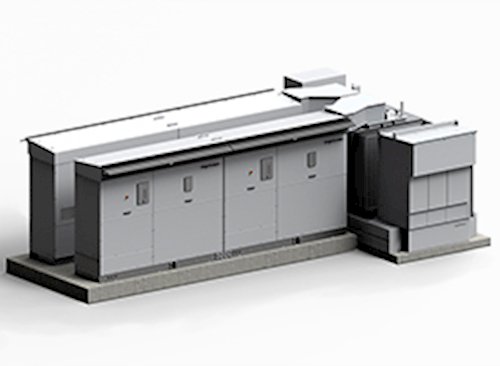Advancements in solar inverter technology have significantly enhanced the efficiency and functionality of solar power systems. These improvements not only maximize the conversion of sunlight into usable electricity but also support grid stability, extend inverter lifespans, and facilitate the integration of renewable energy sources. Here’s an overview of some key advancements in solar inverter station efficiency:

Wide Bandgap Semiconductors
- Silicon Carbide (SiC) and Gallium Nitride (GaN): The adoption of wide bandgap semiconductor materials like SiC and GaN in inverter technology marks a significant advancement. These materials can operate at higher temperatures, voltages, and frequencies than traditional silicon-based semiconductors. The result is inverters with higher efficiency, smaller size, and reduced cooling requirements, leading to lower energy losses and improved overall performance.
High-Efficiency Conversion Technologies
- Maximum Power Point Tracking (MPPT): MPPT technology optimizes the conversion efficiency of solar panels by ensuring they operate at their most efficient point under varying sunlight conditions. Modern inverters often incorporate multiple MPPT channels, allowing for more precise control and optimization of energy harvest from different panel strings affected by shading or orientation differences.
Transformerless Inverters
- Elimination of Transformers: Transformerless inverter designs have become more prevalent due to their ability to achieve higher efficiency and lower weight compared to traditional transformer-based models. By eliminating the transformer, these inverters reduce energy losses associated with DC to AC conversion and enhance overall system efficiency.
Software and Algorithm Improvements
- Advanced Algorithms: Continuous improvements in software algorithms for inverter control and operation contribute significantly to efficiency gains. These advancements include better MPPT algorithms, improved grid synchronization techniques, and enhanced fault detection and resolution capabilities, ensuring optimal performance under a wide range of conditions.
Smart and Hybrid Inverters
- Integration with Energy Storage: Hybrid inverters, which combine solar and battery inverter functions into a single unit, facilitate the efficient integration of energy storage systems. This not only improves the usability of solar energy by enabling storage for use during low production periods but also enhances the efficiency of the energy conversion process.
- Smart Grid Compatibility: Smart inverters are equipped with features that allow them to interact dynamically with the electrical grid. They can adjust output power, manage reactive power, and perform voltage regulation, contributing to grid stability and allowing for more effective integration of renewable energy sources.
Modular and Scalable Designs
- Scalability and Redundancy: Modular inverter designs offer scalability, allowing solar power systems to be easily expanded as needed. Additionally, modular systems can enhance reliability and reduce downtime, as individual modules can be serviced or replaced without impacting the entire system’s operation.
Environmental Adaptability
- Cooling and Environmental Protection: Advances in cooling technologies and environmental protection for inverters have improved their efficiency and durability in various climatic conditions. Innovations include passive cooling designs, advanced heat sinks, and protective coatings that shield components from dust, moisture, and temperature extremes.
These advancements in solar inverter technology not only boost the efficiency of solar power conversion but also enhance the reliability, safety, and grid-friendliness of solar energy systems. As research and development continue, further improvements in inverter efficiency and functionality are expected, driving the solar industry towards even greater sustainability and performance.
